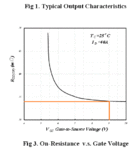Ogu Reginald
Full Member level 6
(TIP41 and TIP42) AND(BC547 and BC557), which one should I use? Should I connect resistors between the two base of the transistors?
If yes, should the resistors come before the two base are connected together or should the resistor be connected at the individual base after they have been connected together,
If yes, should the resistors come before the two base are connected together or should the resistor be connected at the individual base after they have been connected together,



